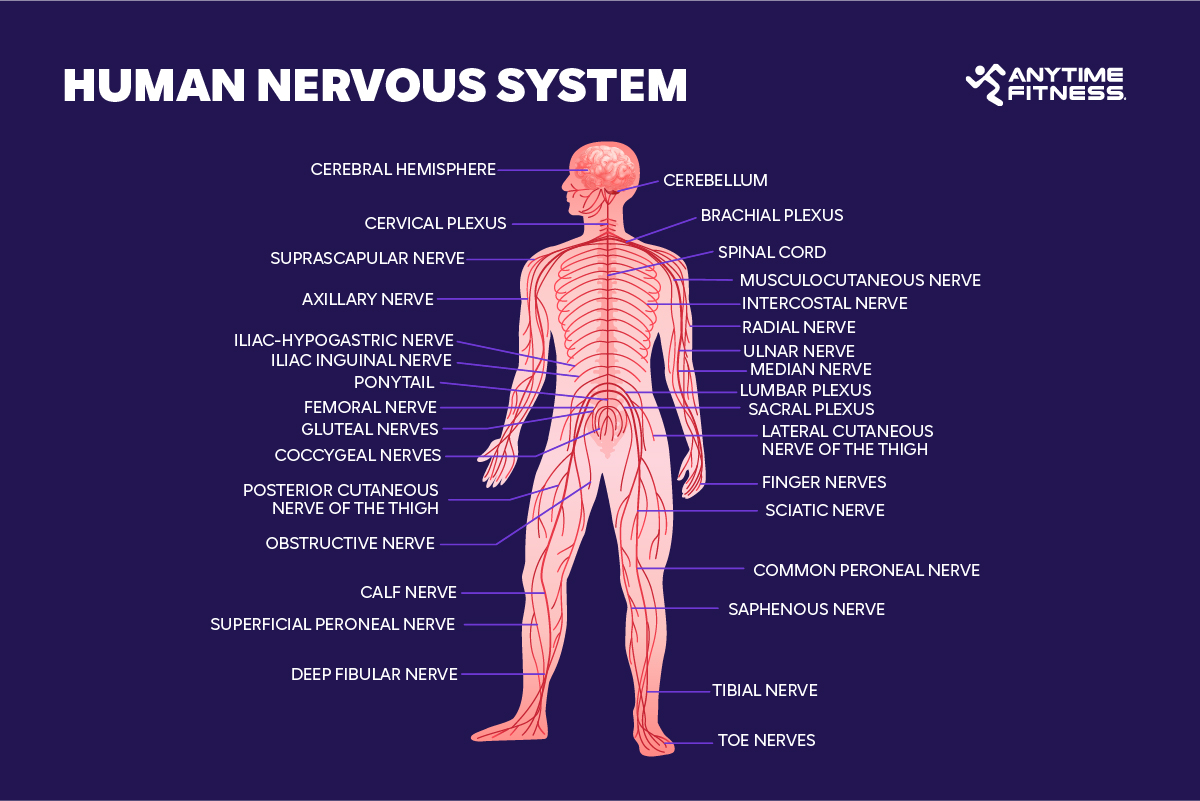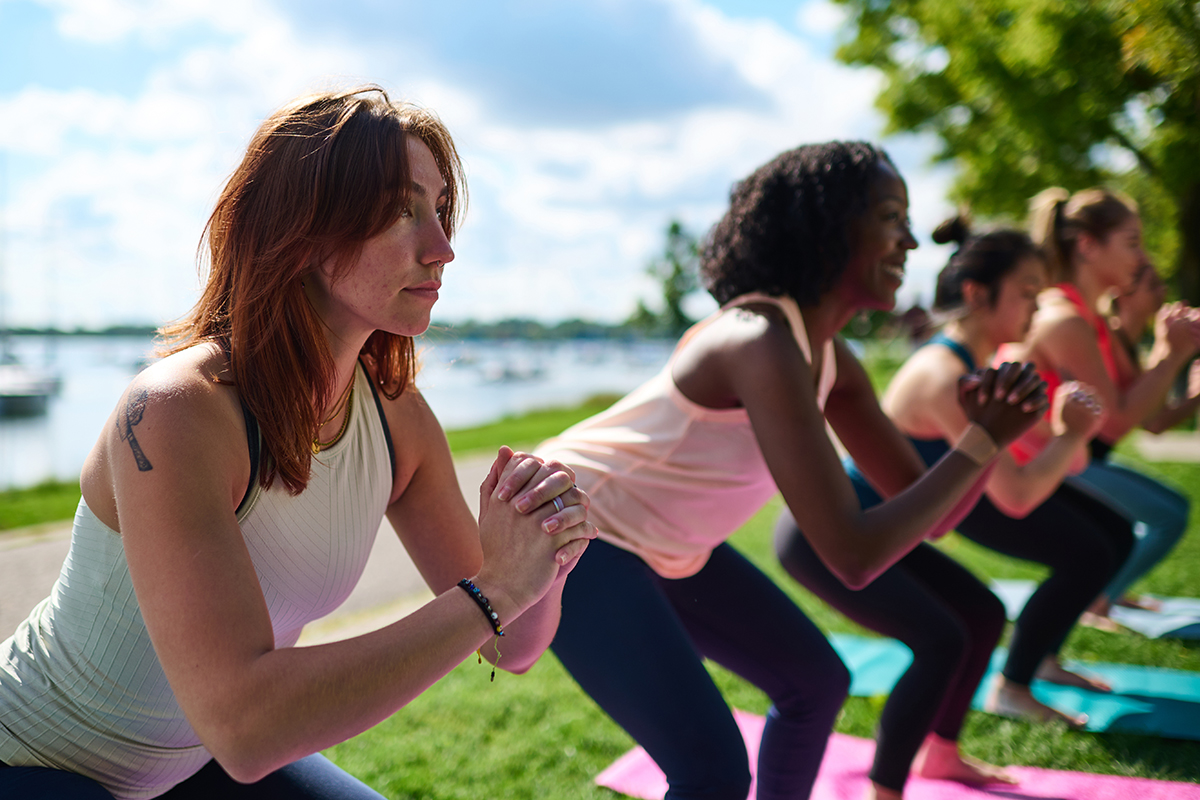Chances are you’ve heard the term “somatic exercise” in recent conversations or seen pop-ups on social media with 30-day somatic stretching challenges — promising everything from blasting belly fat to alleviating chronic pain and tension.
But what are somatic exercises, and do they really hold the key to mind-body balance and wellness? Turns out there’s much more to somatic exercise than just a trending topic.
What are somatic exercises?
The Somatic Movement Center gives the following somatic definition: A somatic movement is a movement that’s practiced consciously with the intention of focusing on the internal experience of the movement rather than the external appearance or the end result of the movement.
Meaning, you move your body based on how you feel rather than to reach a specific goal or stretching sequence like in yoga. Somatic stretching includes gentle, mindful movements that help you reconnect with your body, better manage stress, and regulate your nervous system. Practitioners have long touted the routine as an accessible way for people to experience somatic stretching without special training or a big time commitment. It’s also simple enough to do every day, making somatic exercise worth exploring as part of your holistic path to wellness.

The history of somatic movement
Professor Thomas Hanna coined the term “somatics” in the late 1970s to define a field of movement studies and bodywork focused on the body’s internal physical sensations, perceptions, and experiences.
In his groundbreaking book, Somatics: Reawakening the Mind’s Control of Flexibility and Health, Hanna outlines how many chronic issues like stiffness, backaches, and fatigue can be avoided if you can consciously control nerves and muscles — which Hanna called “sensory-motor awareness.” Hello, mind-body connection!
Since Hanna founded the field nearly 60 years ago, somatic movement has gained a massive following — there are even global organizations and medical subspecialties dedicated to the practice. It wasn’t until recently that somatic exercise started showing up everywhere, with everything from fitness apps dedicated to somatic exercise to medical professionals touting benefits like pain relief and trauma recovery.
Let’s take a closer look at these benefits, including specific trauma-release exercises, and how you can try somatic exercise for yourself as part of a well-rounded training, nutrition, and recovery routine.
The fundamentals of somatic exercise
Somatic exercises include both calming and activating practices, depending on how your body feels.
Calming practices
Taking a moment to scan your body for tension or pain can help you be aware of what’s happening in your body. You don’t need any special equipment to do a self-body scan, just get in a comfortable position, close your eyes, and move your awareness from your feet up to your head.
Once you’re aware of any tension or pain in your body, you can begin to move however it feels good to release tension in those areas. Remember, there is no stopwatch with somatic exercises — they are intended to be slow and mindful, so take your time.
Activating practices
Activating practices such as free-form dancing and full-body stretching are great mind-body exercises that bring more energy and movement into the body, allowing you to release tension and have a little bit of fun with your mindfulness.
Somatic movement techniques
Somatic movement includes many different techniques that connect your body and mind to advance healing and nervous system repair through trauma exercises.
Here are four somatic movement techniques from Psych Central that you can try on your own:
- Body awareness: Consider this your first step in learning to understand and release tension from your body. Using a simple body scan, like mentioned above, can help you begin to notice where you may hold tension — specific muscles or general areas — and how to more easily tap into calming thoughts and feelings.
- Grounding: Exactly how it sounds, grounding exercises allow your body to feel stable, calm, and connected to the earth. One simple grounding exercise is to hold a piece of ice in your hands. Notice how it feels. Is it uncomfortable? Refreshing? Does it feel differently as it begins to melt?
- Sequencing: As you begin to notice where you hold tension and move slowly and mindfully to help release, pay close attention to the order in which the sensations of tension leave your body. Do you feel a tightness in your stomach and then in your chest? Do you feel a little shaky?
- Resourcing: As you release tension and/or trauma, think about actual resources in your life that have made you feel safe — relationships, a physical place, anything that makes you feel calm and at peace. These positive recalls act as an emotional anchor for you to lean on whenever you could use a little support.
Somatic exercise and its effect on weight

Some of the biggest buzz around somatic movement is its purported positive effects on helping those who regularly practice somatic exercise to experience noteable weight loss — particularly those who carry excess weight around their waistline which is often correlated with stress.
Using somatic exercise to help release stress and tension may lower stress hormones like cortisol, allowing people to lose weight more easily and avoid being trapped in a high-stress cycle. But there are no scientific studies that support specific claims around using somatic exercise for weight loss, so keep that in mind when you consider adding somatic exercises to your wellness routine.
Far from a get-thin-quick scheme, somatic workouts are focused on grounding your mind and body so you can go deep inside to help heal and recover. After all, being able to lower stress and find better internal balance in everyday life is a real win.
Connecting the body and mind with trauma exercises

According to the American Congress of Rehabilitation Medicine (ACRM), somatic exercise focuses on a bottom-up approach to trauma recovery.
“Rather than starting in conversation about emotions or cognition, this approach focuses on how the body responds to trauma and how that, in turn, affects the brain.” The nonprofit notes that people who experience trauma often disconnect from their body as a means of self-protection and preservation. “Trauma causes the sympathetic nervous system to go into overdrive, and it’s hard for people who have experienced trauma to regulate their nervous system back into a state of calm awareness.”
Whether you’ve personally experienced a traumatic event or have been part of collective trauma like the coronavirus pandemic, there are many promising studies that associate the power of mind-body exercises with effective trauma release. Learning stretches to release trauma might be key to unlocking more peace and healing in your life.
3 trauma-release exercises to try
Somatic movement includes stretches specifically designed to release trauma. Here are three trauma-release exercises to try:
1. Swaying
Standing tall, let yourself begin to sway back and forth, gently like a reed in the wind. You can close your eyes and allow the slowly flowing movement begin to release built-up tension. Relax into the rocking and let yourself truly unwind.
2. Wave breathing
Breathwork is a fundamental part of somatic therapy and mindfulness. Either standing or sitting still, rest your hands on the front of your thighs. Inhale, reaching your chin upwards and slide your hips backward, creating an arch in your back. Pause, then move your head toward your chest and bring your tailbone forward. Pay attention to the way your spine and supporting muscles move like a wave with your breath.
3. Stretching to open the body
Stand up with your feet a little wider than hip-width apart, and place your hands in the small of your back. Looking up or down, bend your knees slightly and push your hips forward to stretch the back muscles. Gently and slowly move your pelvis and hips to one side. Stay here and take three deep breaths. Bring your feet back to the center, then widen your stance again and rotate in the opposite direction. Again, take three deep breaths. Repeat as needed.

How to do somatic stretching at home or in the gym
Since so many people are now asking “what is somatic exercise,” there is no shortage of expert advice and practical how-tos online and in social media. Finding credible sources as you begin any exercise routine is key, and Johns Hopkins Medicine’s Self-Care through Somatic Movement series is an excellent place to start.
Peabody Institute faculty member Jen Graham leads the series of gentle movement practices that support the mind, body, and soul — organized by Activating, Calming, and Shorts (5-minute) sessions. You don’t need any equipment or even workout clothes, as Graham designed the series to be done anywhere that’s convenient and comfortable for you. Accessible ones to try include Trigger Point Release and Releasing and Activating through Effort.
Somatic exercise and whole-you health
While some exercise and movement may not be for everyone, somatic workouts by design are truly accessible for every body and help you explore greater mindfulness. All you need is 5 minutes, a safe, comfortable space, and an open mind to experience a deeper personal connection through mind-body exercise. Including somatic exercise as part of your training, nutrition, and recovery routine may be just the ticket to unlocking better mental wellbeing.
Learn more about how mental health and physical activity are key to achieving optimal health and wellness in everyday life.



